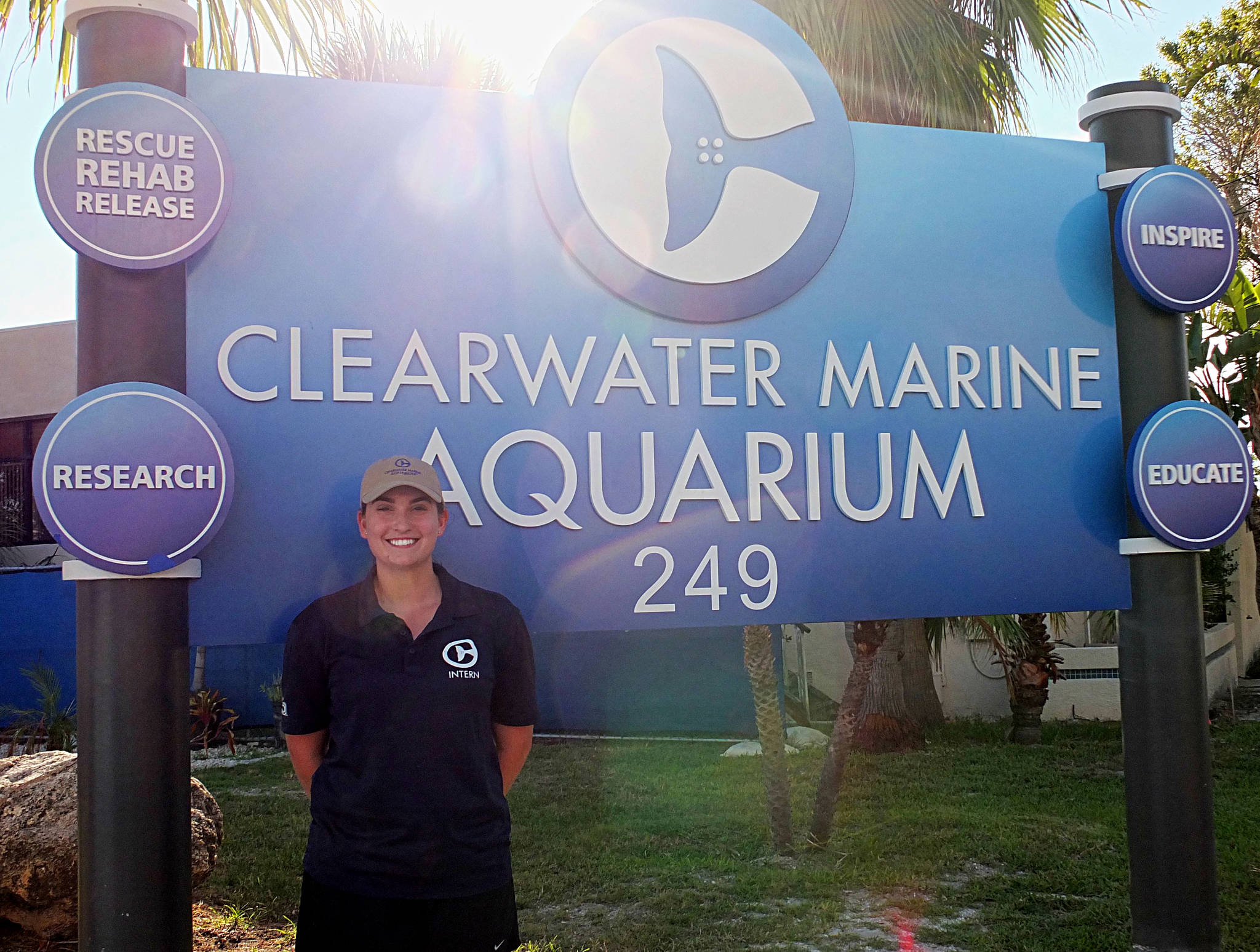Lindsay Lancaster, who graduated from Orcas High School, is a junior at Eastern Washington University. She will graduate in the spring of 2018 with a bachelor of arts in psychology and a minor in sociology. Lancaster plans to pursue a career in marine mammal care. She is currently in a summer internship program at the Clearwater Marine Aquarium in Florida, fulfilling a long-held dream of working with dolphins. The Sounder asked Lancaster about her experiences.
Question: Explain the internship program.
Answer: Almost every department at aquarium has an internship program; my internship is through the education department. My day-to-day duties include assisting in eco-boat tours, helping with off-site educational programs in the surrounding communities, and assisting marine specialists on our Dolphin Adventure Tour with identifying local bottlenose dolphins through dorsal fin photo-identification, performing water quality testing, recording and logging behavioral observations, and analyzing photos.
On our second boat tour, the Sea Life Safari eco-boat tour, I assist in an otter trawl net pull, sorting and identifying marine specimens, and collecting water samples. I also conduct the feedings of our resident stingrays at the aquarium and do daily husbandry duties of our resident Russian Tortoise.
By the end of my internship, I will have to “test out” by narrating one of the boat tours the whole way through. I have chosen the Dolphin Adventure Tour and will begin narrating parts of the tour in the next couple of weeks.
Question: How did you get the internship?
Answer: I found out about the Clearwater Marine Aquarium after watching the famous movie “Dolphin Tale” with my dad. Afterward, I was obsessed with everything CMA. Most of my senior paper was based on the work being conducted at the aquarium at the time. On a family business trip, my parents surprised me with a visit to the aquarium and from then on I knew I wanted to do an internship there.
I have been saving up money for this experience for the past four years and at the beginning of the year I sent out my application. I was offered an internship in the education department and the rest is history! So far I have loved every minute of my summer here in Clearwater, Florida.
Question: What have you learned?
Answer: I am constantly learning something new every day. I have learned all about CMA’s dorsal fin photo-identification program and have developed a lot of interest in this field of research. I have also learned about many of the local species of fish that we bring up in our net pull, local birds in the area, history of the Clearwater Bay, and how to log all the data that we gather on our boat tours. I have learned about NOAA’s voluntary boating program called dolphin S.M.A.R.T. and love teaching others about it.
A fact about bottlenose dolphins that I have learned is that a group should not be referred to as a pod; instead, they are called fission-fusion groups or just groups. This is because a pod is a genetically linked group of animals that stay together their whole life. This is not true for this species of dolphin and they often travel in small groups of two or three, or sometimes they remain alone. Pod would be correctly used in reference to our local species of dolphins, the Orca Whales.
I have also learned how to build a curriculum for off-site educational programs for children and am in the process of writing one out now. I’ve learned a lot about the different marine animals that are residents of the aquarium, how they got there and why they had to stay.
With Clearwater Marine Aquarium being a rescue, rehab and release facility, all of the animals that call the Aquarium home were deemed non-releasable by NOAA. I am excited to continue learning all that I can in the next two months.
Question: What is the most memorable moment so far?
Answer: The most memorable moment I’ve had so far happened when I was out on our dolphin research boat for the day. The whole day we were cruising along just looking for Atlantic bottlenose dolphins to stop and document with dorsal fin identification photos and ethograms, which is a catalog of all the different kinds of behaviors observed in an animal.
Later in the day, a storm started rolling in so we were racing it back to the aquarium. On our way, we ended up seeing a dolphin so we stopped to get our last documentation. Suddenly, the one dolphin turned into a group of dolphins with more than fifteen animals all playing and socializing with one another. Soon they surrounded our boat with the storm raging in the distance. That’s when we noticed a stenella dolphin, more commonly known as a spotted dolphin, in the mix of the group. This is a very rare species to see in our area, and even more rare to see with a group of bottlenoses. Everyone on board was so excited to be experiencing this moment that we almost forgot about our research duties!
After about twenty minutes, which is the allotment of time NOAA and the FWC allows us to stay with wild dolphins, we continued our race with the storm back to the dock. It was such a rare and unique period of time and I am so happy I got to experience it.



